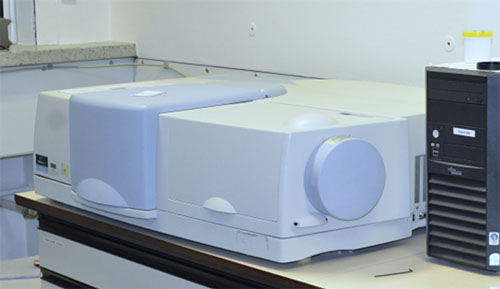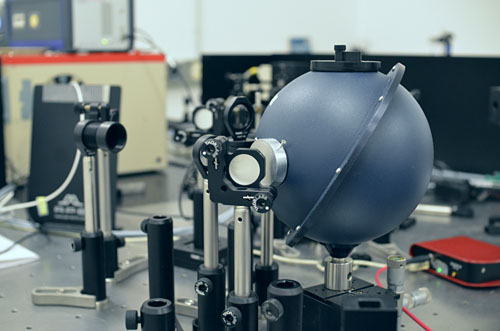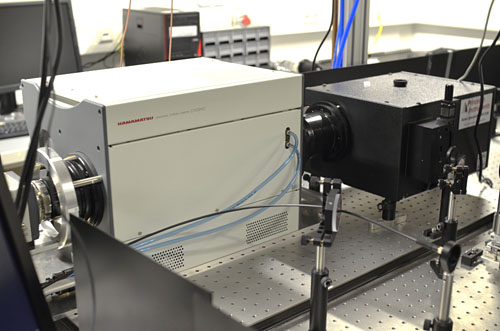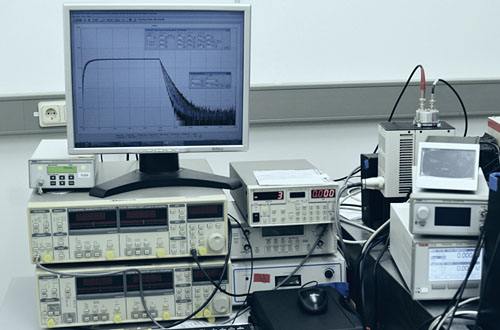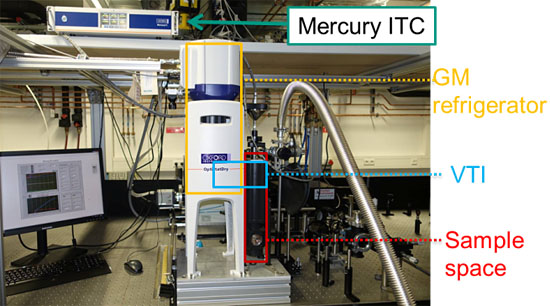Optical Spectroscopy
Two dedicated laser laboratories were built at the IMT in 2016, and provide the backbone for our optical spectroscopy work. Our interests range from fundamental material characterization to detailed diagnostics of device function. The common goal of these labs is to enable the engineering of devices (often based on new materials) whose macroscopic functionality relies on nano- and micro-scale material control. Our efforts in spectroscopy fall into the categories of steady-state and time-resolved techniques discussed below.
Continuous Wave Laser Setups
A tuneable Ti:sapphire laser with external mixing units (M squared) allows us to generate intense CW excitation beams spanning the UV to NIR (300nm – 1000 nm). Complemented by laser diodes this allows a wide variety of CW and quasi-CW laser spectroscopies to be performed.
Photon Counting
Time-resolved emission measurements are extended by a multichannel scaling card (Picoquant) that allows lifetime measurements from the nanosecond to millisecond time regime. A variety of detectors placed after a double monochromator (Bentham Instruments) allow the resolution of even weak signals from the visible to the NIR.
Transient Absorption
We have a Ti:sapphire amplifier system synchronized with a Q-switched pump laser to allow reaction kinetics to be monitored from hundreds of femtoseconds to several milliseconds without any gaps with a home-built transient absorption spectrometer.
Key features are:
- 150 fs – 1 ms time range
- 500 – 1000 nm spectral range of whitelight probe
- Single wavelength excitation from 355 to 800 nm
- Temperature dependent measurements possible.


